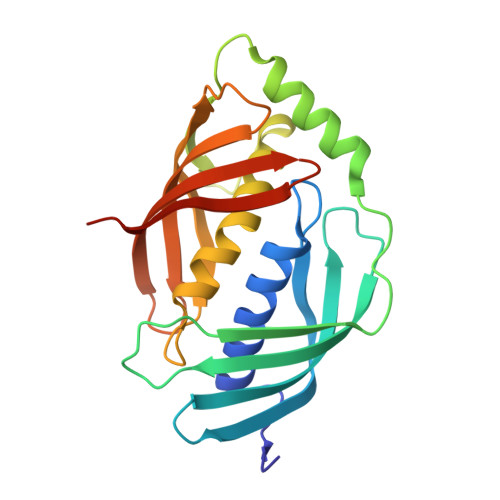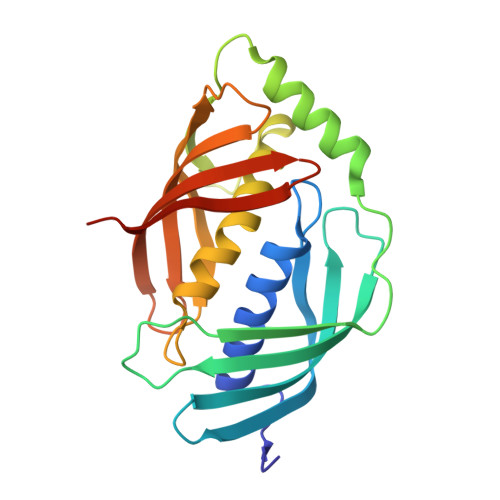An Inflammatory Role for the Mammalian Carboxypeptidase Inhibitor Latexin: Relationship to Cystatins and the Tumor Suppressor TIG1
Aagaard, A., Listwan, P., Cowieson, N., Huber, T., Ravasi, T., Wells, C.A., Flanagan, J.U., Kellie, S., Hume, D.A., Kobe, B., Martin, J.L.(2005) Structure 13: 309-317
- PubMed: 15698574
- DOI: https://doi.org/10.1016/j.str.2004.12.013
- Primary Citation of Related Structures:
1WNH - PubMed Abstract:
Latexin, the only known mammalian carboxypeptidase inhibitor, has no detectable sequence similarity with plant and parasite inhibitors, but it is related to a human putative tumor suppressor protein, TIG1. Latexin is expressed in the developing brain, and we find that it plays a role in inflammation, as it is expressed at high levels and is inducible in macrophages in concert with other protease inhibitors and potential protease targets. The crystal structure of mouse latexin, solved at 1.83 A resolution, shows no structural relationship with other carboxypeptidase inhibitors. Furthermore, despite a lack of detectable sequence duplication, the structure incorporates two topologically analogous domains related by pseudo two-fold symmetry. Surprisingly, these domains share a cystatin fold architecture found in proteins that inhibit cysteine proteases, suggesting an evolutionary and possibly functional relationship. The structure of the tumor suppressor protein TIG1 was modeled, revealing its putative membrane binding surface.
Organizational Affiliation:
Institute for Molecular Bioscience, University of Queensland, Brisbane, QLD 4072, Australia.
















